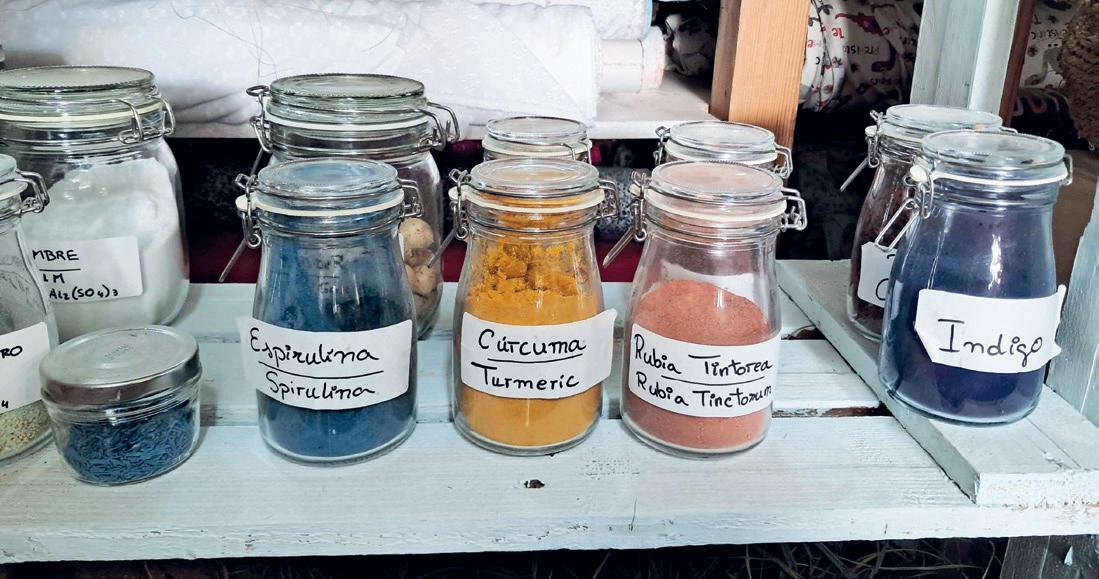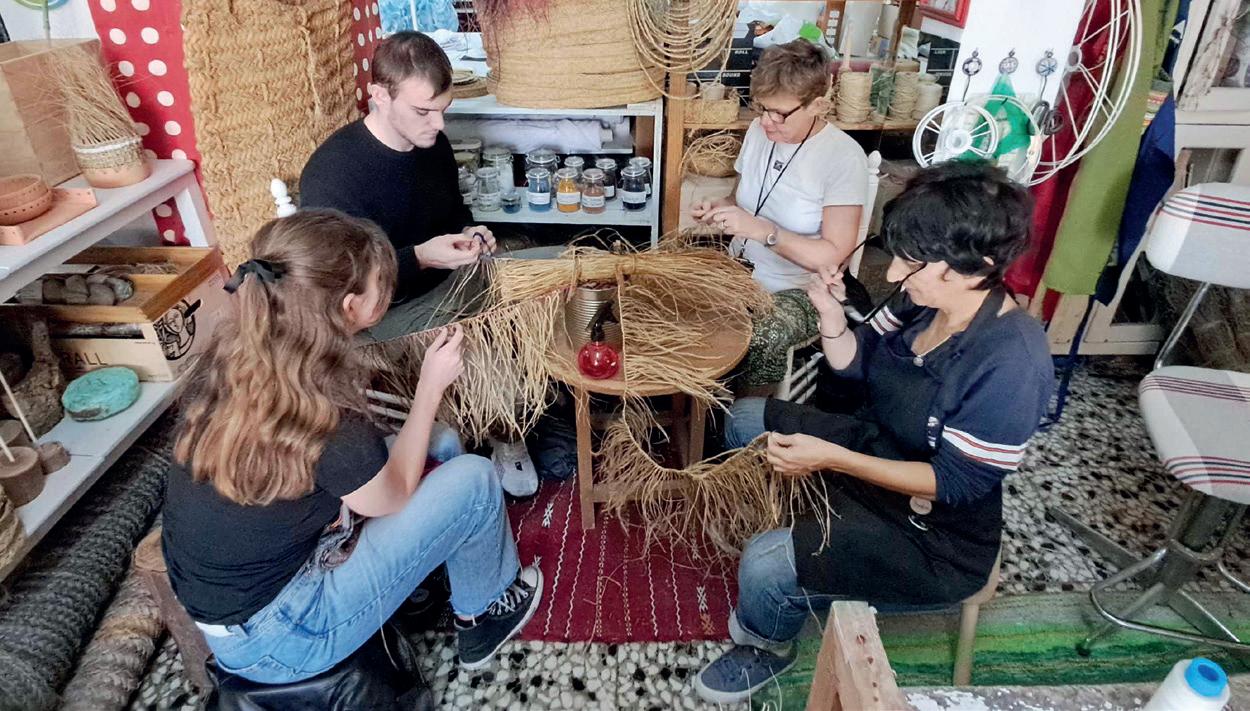








From front page










From front page
After the ceremony - having breathed a sigh of relief now the deed was finally done - we wandered through the cobbled streets in full wedding regalia, to cries of ‘Viva los novios’ (long live the newlyweds) from locals.
Then, in the leafy park at the top of the village, we had the obligatory photos taken with the classic sweeping views over the Mediterranean, a backdrop so stunning it felt like a painting.
That day remains etched in my heart - timeless, romantic, and perfectly Mijas.
So it’s no surprise that Mijas has become one of the most popular venues for weddings on the coast. Couples from all round Spain come
PERFECT LOCATION:
here for that same charm we fell in love with - a combination of historic elegance, Andalucian character, and unforgettable vistas.
Best of all, these days they’ve got a lot less paperwork!
The village of Mijas has grown massively in popularity over the last few decades, but its soul has remained beautifully intact.
Much of that authenticity is thanks to locals like my stepmother, Shelagh Tennant, a long-time resident who settled here decades ago. Shelagh wasn’t just part of the community; she WAS the community.
She knew everyone - from shopkeep-
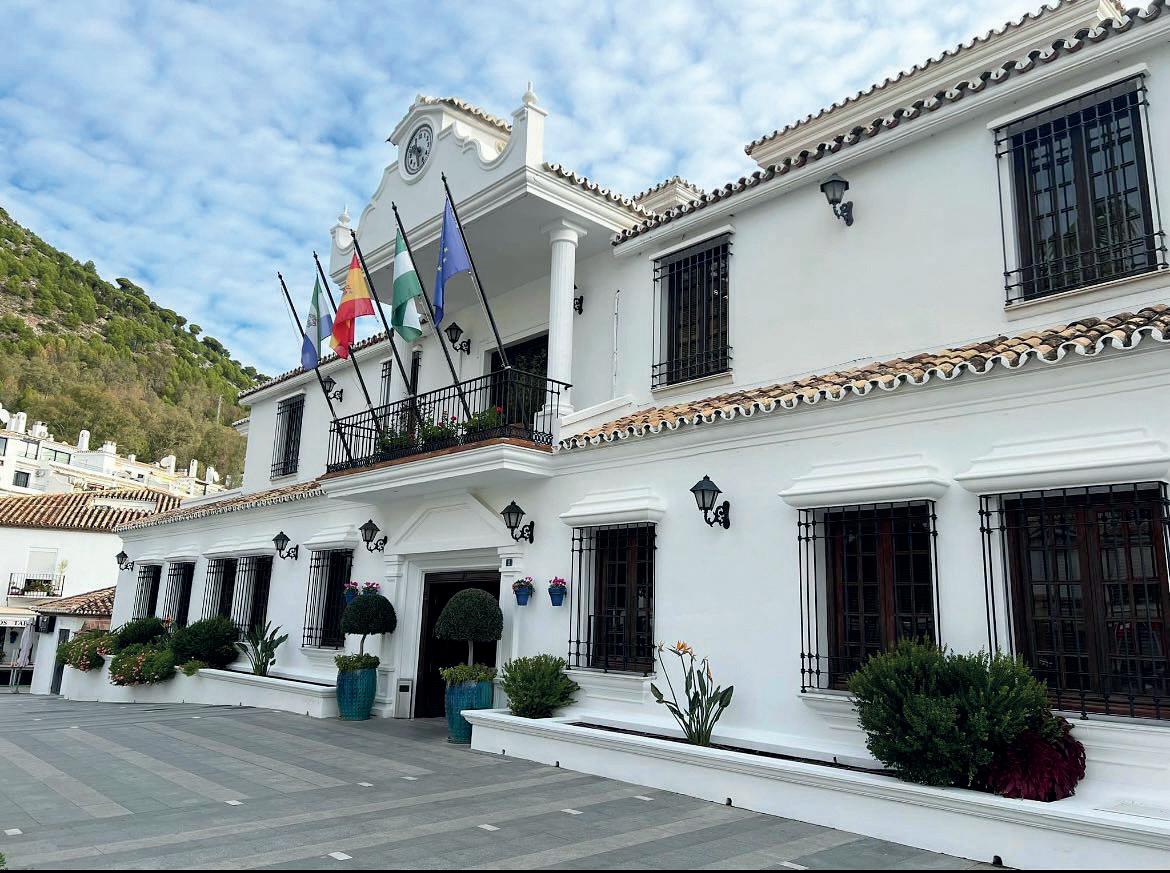
ers to the mayor - and could often be found chatting with neighbours in the square or - most likely - in one of the bars.
Quite a character, she is credited with translating for the Beatles when they came to Spain and had her own bar, which had one of the best collections of music on the Costa del Sol.
Sadly she’s no longer with us, but what certainly is are the hordes of tourists who come in droves, pouring out of tour buses for a quick wander and the obligatory photo with the donkey statue.
But Mijas has always had layersand it rewards those who venture deeper.
Yes, you can enjoy a relaxed morning or evening here, especially if you’re travelling with family. It’s a short 15-minute drive from the coast, and the village is well-equipped with a huge multi-storey car park that costs just €1 a day.
You’ll find the main square just steps away - leafy and inviting, with a playground for the kids, donkey taxis lined up for a trot around the vil lage, and plenty of cafés offering local tapas and cool drinks.
But the real Mijas - the one that convinced us to get married here - is waiting quietly for the curious wanderer.
Keep walking past the central square and into the meandering backstreets. These quieter corners unravel like a ribbon along the Si erra de Mijas mountainside, with tucked-away fountains and pictur esque old doorways blooming with bougainvillaea.
And for those with energy to spare, hiking trails thread their way out of

DELIGHTFUL: Bougainvilla frames many doorways in Mijas, while the flower pots are in blue throughout the village
the village and into the pine-covered hills.
From the Puerto del Pino trail
Duendes, or maybe a short stroll to the old Cantera El Puerto

Shelagh lived in Mijas for decades

there’s no shortage of breathtaking views, especially now in spring when wildflowers and the scent of lavender fill the air.
Overhead, it’s not unusual to spot eagles or even griffon vultures circling the cliffs. Back in the heart of the village, cultural gems like the municipal museum offer fascinating glimpses into local historyespecially the story of the Mole of Mijas (see page 18), a former mayor who famously hid for 30 years in his own


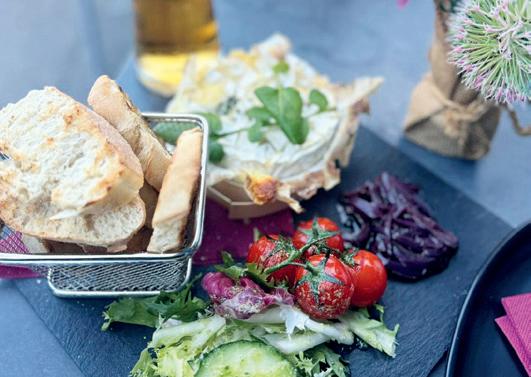

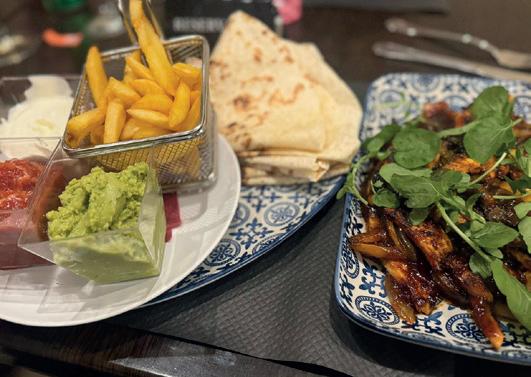
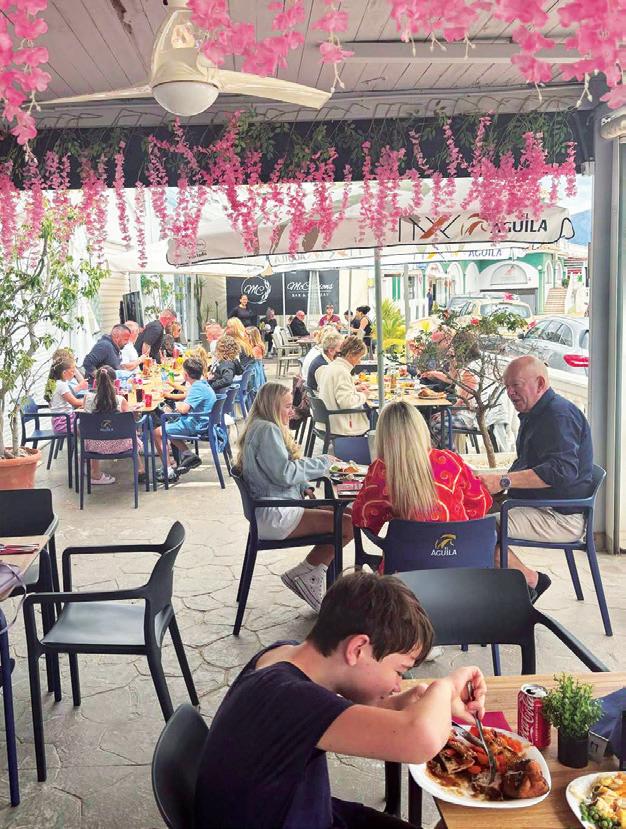

home after the Civil War.
The museum also captures the village’s economic past, like the esparto trade. This tough mountain grass, collected in the hills, was woven into shoes, hats, and bags - an essential lifeline during the harsh postwar years. The museum’s photos and personal stories, like that of a grandmother stitching esparto in the street, are a fascinating window into the past life of the villagers.
One of our favourite parts of Mijas is Constitution Square. It’s still a lively meeting point and a great place to browse high-quality crafts - ceramics, textiles, and more. From there, take a walking tour past key landmarks, like the Virgin of the Rock shrine, carved straight into the mountainside.
Its panoramic viewpoint is one of the best in southern Spain and perfect for a quiet moment of reflection. And then there’s the oval-shaped bullring, built in 1900. Though bull fighting is no longer com mon, the site occasionally hosts horse

shows. But it’s the surrounding gardens and the path to the edge of the village that hold the real allure - peaceful, flower-filled, and deeply atmospheric.

its most magical in the evening. As the tour buses disappear and the village returns to itself, a gentle hush falls over the streets. Locals emerge with chairs to sit outside their homes, children play
These days, when we return from our home on Mijas Costa down near the coast - whether for an anniversary or just to walk familiar paths - we still feel the same sense of belonging that brought us here three decades ago.
We grab a Victoria beer at a shady terrace, watch the sun dip below the horizon, and smile. Mijas is not just a village. For us, it’s a love story. And like all good stories, it only gets better with time. in the fading light, and the spirit of old Spain rises gently to the surface. It’s in these quiet hours that Mijas whispers its secrets.








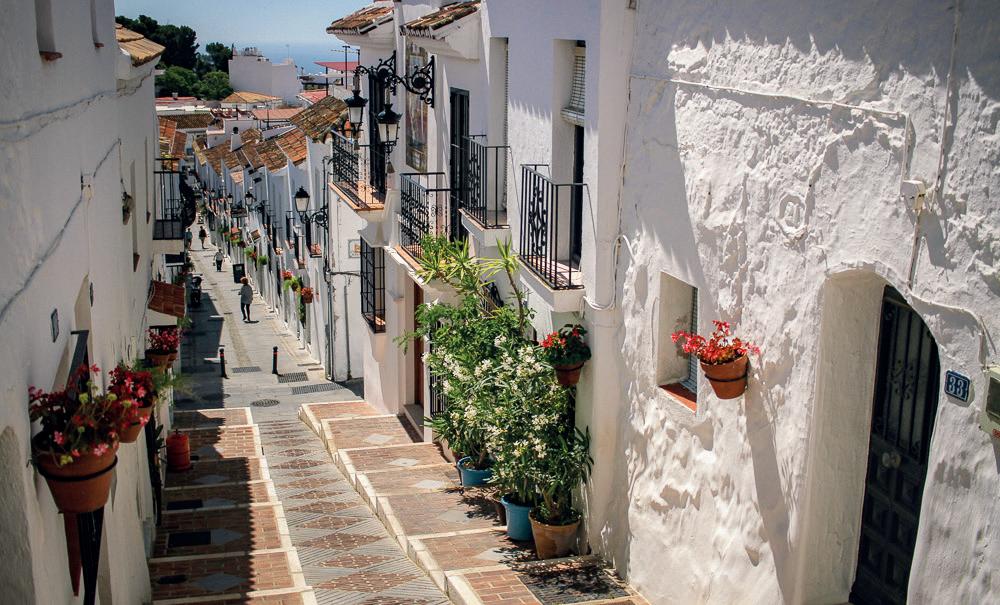

Visitors are often curious to know why there are two sculptures of the Roman God Hercules flanking the entrance to Mijas Ethnological Museum of Mijas. They were put there to symbolise the burden of responsibility of the old Mijas political leaders. Clearly they had a Herculean task.


If you thought you knew all there was to know about Mijas, these fascinating facts could make you think twice
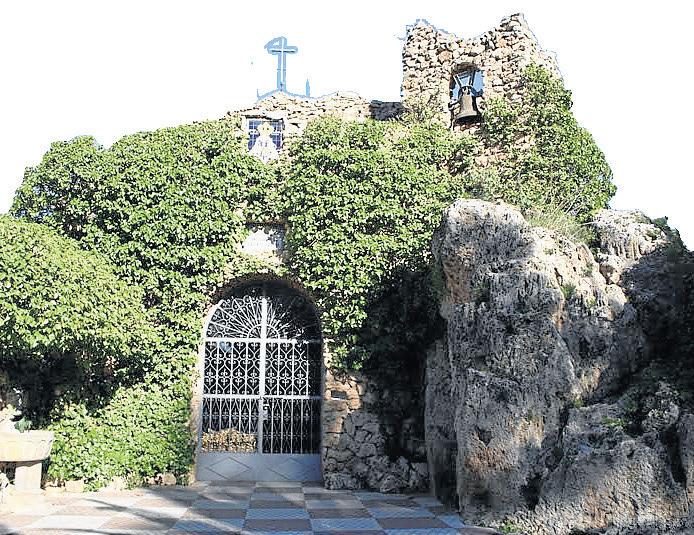
One of the treasures of Mijas is the Virgen de la Peña sanctuary where, according to legend, the Madonna appeared to two shepherds. As a tribute, a hermitage was hollowed out in stone which has become a point of pilgrimage.
Traces of Punic-Phoenician temples have been found in only eight locations throughout the Iberian Peninsula and Mijas is one.
During excavations in 2013 two bronze pieces representing the Eyes of Astarte the goddess were found within the old city walls, suggesting that the site was once a sanctuary to a healing cult.
During the 1960s Mijas was a much sought-after backdrop for movie makers for its the typical Andalucian charm.

Brigitte Bardot (above), Raquel Welch and the Spanish actress and singer Marisol respectively strolled its romantic streets in Les Bijoutiers du clair de lune (1958), Fathom (1967) and Solos los dos (1968).
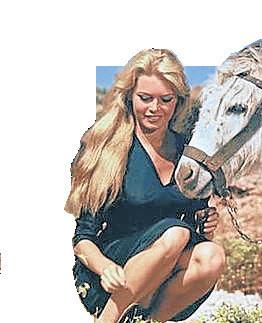

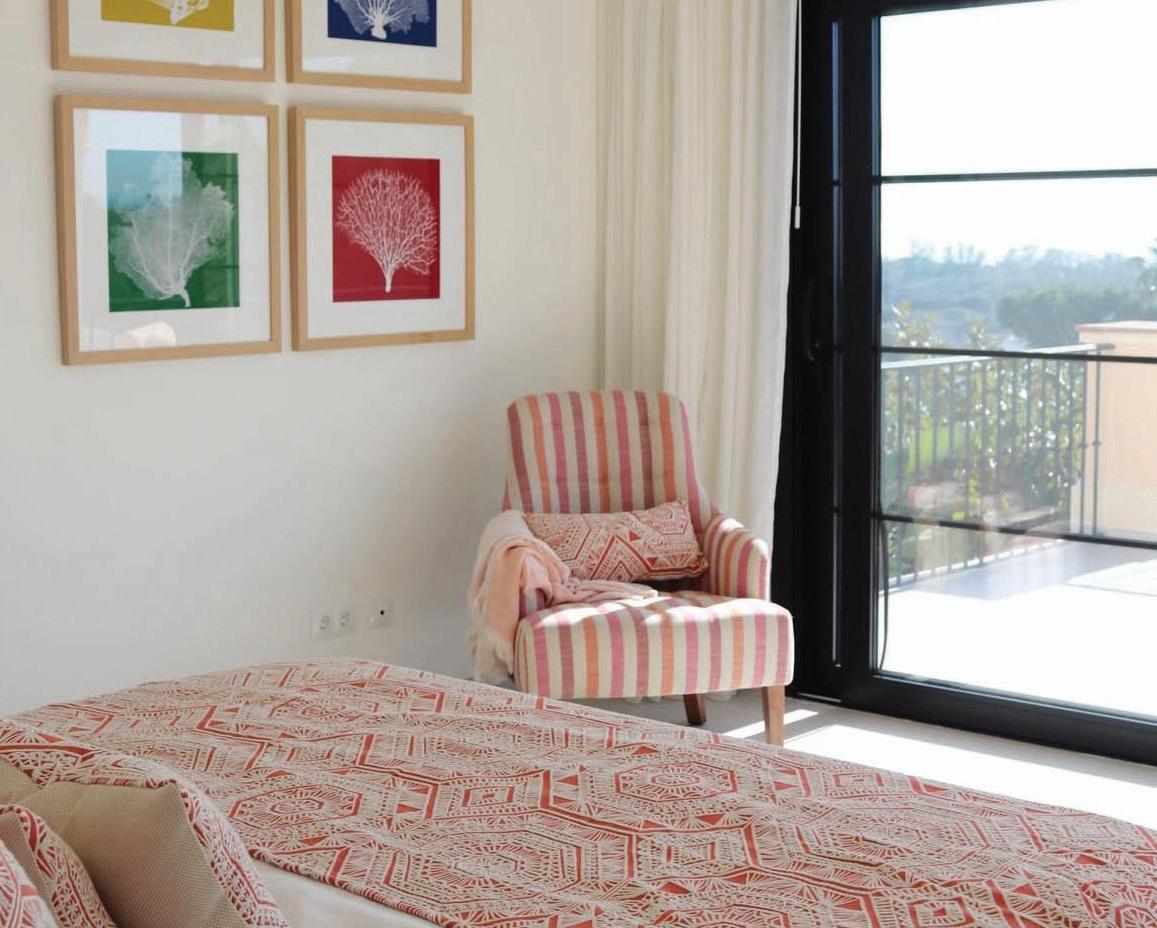



Meet one of the last four esparto weavers in Andalucia as she strives to preserve the traditional craft
By Yzabelle Bostyn

WOVEN baskets, espadrilles and rugs often come to mind when people think about Mijas.
These items are made from a coarse, wild grass known as esparto
Once a sign of poverty, esparto was originally used as a cheap material to weave a myriad of useful items. Now, this traditional handicraft is getting a modern makeover with artisans like Sonia Lekuona leading the way.
She is one of four official esparto weavers left in Andalucia, the former epicentre of this craft.
Hailing from Santander, the 51-yearold discovered weaving over a decade ago when she moved to Mijas after initially taking an interest in it during her university days.
The 2008 financial crash saw her lose her job as an archaeologist, so she started a children’s clothing business, Musketa.
This allowed her to connect with other local artists, one of whom offered to teach her esparto weaving.
Francisco Moreno Tamayo began teaching her in 2014 and 11 years later she is at the forefront of Andalucia’s drive to preserve this dying art.
“Esparto weaving fell out of use because of its association with poverty,” Lekuona told the Olive Press.
“But it has a long history in this area, with evidence dating back to Neolithic times.”
Lekuona is travelling the region to preserve this rich history, going from town to town to learn their unique stitches before it's too late.
“There are still some older people who remember how to do it, so we run workshops where

grandparents can teach their grandchildren how to weave,” she said.
“It’s amazing. I once taught a class in a nursing home for people with dementia and this lady kept insisting she didn’t know how to weave, but at the same time, her fingers were already doing the work for her. Her mind didn’t remember but her hands did.”
As well as teaching the next generation, Lekouna is updating this ancient art by combining ceramics, fabrics, pom poms and feathers to bring weaving back into the modern age.
The former archaeologist also creates art and decorations from the grass, a departure from its traditional functional use.


She experiments from her workshop at the Puerta del Agora artisan space in Mijas Pueblo alongside four other artists. There, she teaches the next generation of weavers and holds workshops for beginners.
She is also a university
teacher in ‘experimental archaeology’ courses where students get to learn the crafts they are studying and she holds therapeutic courses for mentally ill or disabled people.
I was lucky enough to become one of Lekuona’s students for the day when she invited the Olive Press along for a taster session.
A warm presence from the get go, Lekuona began by explaining what esparto is and its cultural context as well as the technical side of how it is cultivated, harvested and prepared for weaving.
Esparto is a wild plant, meaning it is not farmed in the traditional sense but collected from where it naturally grows.
This makes it very sustainable and natural, especially when paired with organic dyes made from turmeric, spirulina and cinnamon.
During our whistlestop workshop of about two hours, Lekuona guided us patiently through the process of making a brush to clean tables, which could also be fashioned into a keyring if you preferred.
A long but rewarding process, it was delightful to see a scrubby bushel

of grass transformed into a useful handicraft.
Our group had a variety of skill levels, from a keen crocheter to someone who hadn’t touched a craft box since primary school, but nonetheless,
From baskets to mounted donkey heads, there is a workshop for all wannabe weavers.
If you’re interested, get in touch with Lekuona at musketa.com or visit Puerta del Agora in Mijas Pueblo. each of us came out proud of our creations.
Lekuona was a calm, adaptable and friendly teacher, perfect to help you learn something new.
